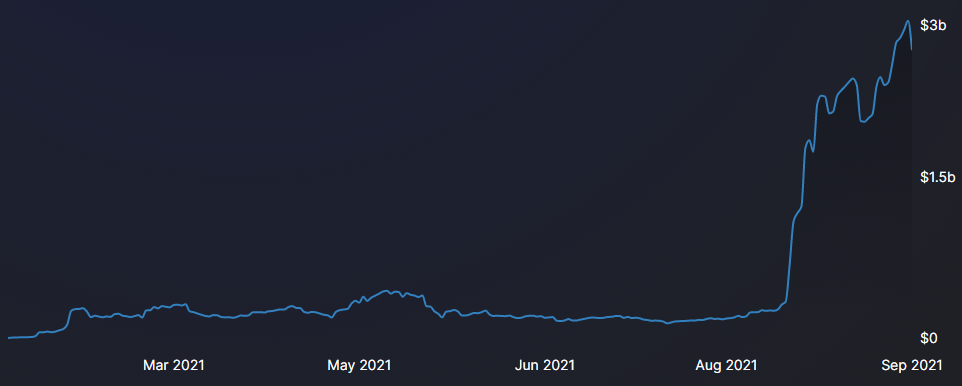In the increasingly competitive landscape of blockchain technology and cryptocurrencies, protocol innovation and the ability to solve the most pressing issues confronting the crypto community are essential for any project seeking long-term success in the ecosystem.
The recent emergence of layer-2 technology such as Arbitrum, Optimism, and a bridge to the Avalanche ecosystem is revolutionizing the way investors, builders, and developers interact with various protocols because each enables fast, low-cost transactions that improve the fundamentals of the decentralized finance (DeFi) ecosystem while also making it easier for retail-sized investors to capitalize.
According to Token Terminal data, DeFi remains one of the crypto economy’s fastest-growing sectors, as evidenced by increases in total value locked (TVL) on protocols.
Last week’s biggest gains were on cross-chain compatible networks and layer-two protocols that provide a lower fee environment.

Trader Joe and Pangolin are two of the top six projects on the list, both of which are on the Avalanche network, which has seen significant inflows and an increase in TVL since the launch of an upgraded cross-chain bridge that allows Ethereum-based tokens and applications to migrate to the Avalanche ecosystem.

Governance elements have also played a role in assisting projects in achieving new levels of growth, as both Alchemix Finance and Rari Capital are now engaged in, or have recently finished, votes to strengthen their ecosystems and promote community involvement.
The first on-chain proposal was just executed!
2,500,000 RGT has been minted to sustain the DAO!
Thank you to the community for your input and vote.
Treasury address: https://t.co/YVSqAAN4nu
Transaction: https://t.co/EZRKSXT3jv
— Rari Capital DAO (@RariCapital) September 19, 2021
Layer-1 projects and decentralized leveraged exchanges thrive
The growing strength of derivatives and options trading protocols, as seen by the data from Token Terminal, is another emerging trend as regulators increasingly crack down on centralized exchanges that offer derivatives services while having lax KYC and AML regulations.

As indicated in the figure above, two of the most significant gainers in terms of protocol revenue during the last week were dYdX and Hegic, a pair of protocols that provide investors with decentralized derivatives and on-chain options trading through decentralized exchanges.
Recently, global regulators have increased their scrutiny of leveraged and derivatives trading platforms, while at the same time, established exchanges such as Coinbase have applied to offer futures trading services, indicating that this sector has the potential to grow even further as cryptocurrencies become more mainstream.
Another advantage of operating on the layer-two solution built in collaboration with StarkWare has been the ability to offer cross-margined perpetuals with zero gas expenses and minimum trading fees to its customers.
High fees on the Ethereum network continue to encourage users to look for alternatives, as evidenced by data showing that Ethereum-competitors such as Tezos (XTZ) and Cosmos (ATOM) have all seen an increase in revenue over the past week. This suggests that the layer-1 battle is heating up as high fees on the Ethereum network motivate users to look for alternatives.
The author’s views and opinions are solely his or her own and do not necessarily reflect those of CoinNewsDaily.
Every investment and trading move involves risk; therefore, before making a decision, you should conduct your own research.























